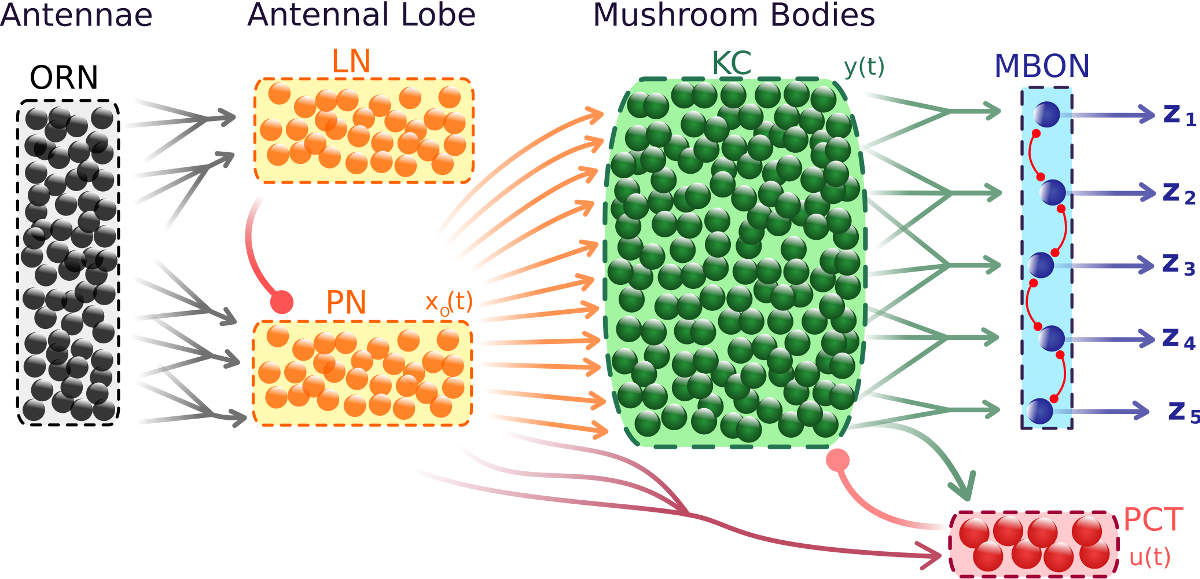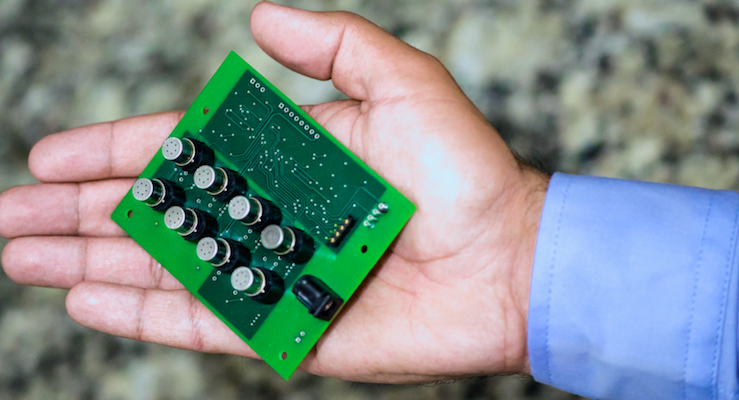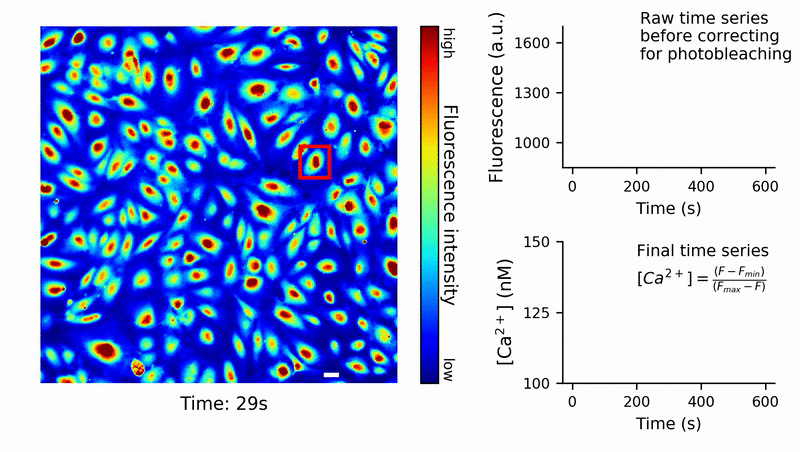My research and current projects
Below I list my current projects and a brief description of my role in them. Follow this link for my list of peer-reviewed publications. For additional information, you can visit my personal profiles in Google Scholar, arXiv and Research Gate. For a list of side projects I, follow this link.
For my CV, click here.
Learning and information integration in Honey Bees
My research interests focus on the multiscale investigation of honey bee behavioral traits, starting from the genetic components, how they modulate brain dynamics and learning, and their impact onto individual and group decision making. This is done with a joint effort by a very interdisciplinary group of PIs led by Dr. Noa Pinter-Wollman (UCLA), Dr. Brian Smith (Arizona State University), Dr. Ramon Huerta (UCSD) and Dr. Jurgen Gadau (Arizona State University). Currently, my participation has three fronts: (i) development of neural models that explain how olfaction is processed and learned at the main olfactory pathway in insects (Mushroom Bodies); (ii) data analysis of behavioral and odor conditioning experiments with honey bees; and (iii) create models of foraging activity based on the experiments and data analyses.

The above animation is a model developed in close collaboration with Dr. Chelsea Cook (Postdoctoral Researcher at Arizona State University). We have been using models and statistical analyses to answer questions about how honey bees decide to persist in foraging at certain patches of flowers and which learning mechanisms shape these decisions.
Temporal integration in large Networks of Spiking Neurons
One important part of understand learning of olfaction information is the proper understanding of how noisy signals can be integrated over time and how patterns can be reliably extracted. Even under controlled conditions, chemical signals are inherently noisy and out of equilibrium. The figure below summarizes the architecture of the first place where the olfactory information is processed in the insect brain. The arrows not only indicate the direction through which the signal travels, but also when divergences (orange arrows) or convergences (green arrows) of synaptic connectivity occur. Although this plays a central role in how insects are able to learn and detect patterns, this also induces instability in the signal of the following neural layers (blue neurons).

In parallel with olfaction and learning, I also conduct research on recording and analyzing chemical sensors (i.e. electronic nose). Electronic noses, which are arrays of chemical sensors sensitive to a spectrum of compounds (e.g., carbon dioxide, methane, etc.), are the best analogue to the olfactory sensory modality of both insects and mammals. Time series recorded by electronic noses can be used to model the response of olfactory receptor cells. Beyond the connection to biology, there are many exciting applications for low-energy devices applied to monitoring of environments such as offices and laboratories. Complex statistical filters (such as online signal de-correlation) can be implemented in boards designed for low consumption of energy (NVIDIA Jetson, Panda Board).

Deep Learning for cell reconstruction
In collaboration with the Wollman Lab, we are creating models of Deep Neural Networks capable of reconstructing cells and cell organelles based on simple microscopy images. Although we are still in an early stage, we are working to open our source code and turn this into a service that many labs can apply to their own microscopy studies.

Optimizing Star Joins using Hadoop Systems
In collaboration with Jaqueline Brito, we are interested in the processing of heavy queries in the Cloud by using parallel frameworks such as Apache MapReduce and Hadoop Spark. In particular, we recently studied the processing of Star Joins , which are very important in business intelligence and Online Analytical Processing (OLAP). The figure has a visual representtion of a star join: a central table $F$ is joined with satellite tables $D_1$, $D_2$, $D_3$ and $D_4$. In OLAP applications, this is a challenge because $F$ is excessively large (at least hundreds of gigabytes). Jaqueline and I were awarded a Microsoft Research Grant in to investigate strategies to optimize the processing of Star Joins.

I am particularly interested in problems involving joins of large tables, and how we can push the boundaries of the state of art when solving such operations. We should have a prepring soon about our latest ideas and experiments! :)
Notch1 in epithelial cells and calcium signaling
In collaboration with Dr. Julia Mack, Dr. Guido Faas and the Arispe Lab at UCLA, we investigated the interperplay between the NOTCH1 and dynamics of intracellular calcium involved in cell enlongation. Although this project is just getting started, our results were part of a recent manuscript that was accepted on Nature Communications.

Communication and dominance contest in electric fish
In collaboration with Rafael Tuma, Dr. Reynaldo Pinto and the Neurobiofisica Lab at the University of São Paulo, we are interested in understanding whether and how weakly electric fish (often Gymnotus sp.) communicate using electric signals. Because these fish are very territorialists, we are proposing novel techniques based on time series segmentation to investigate the establishment of a dominance hierarchy between pairs of (conspecific) fish and the how communication shapes the contest for the dominant role.

Deep Learning for the detection of SNPs
In a recent collaboration with Dr. Serghei Mangul, we are starting to look at the possibility of using Deep Learning for SNP detections. Note that Google has recently won the PrecisionFDA Truth Challenge for their highest performance in SNP detection by employing a Deep Neural Network.